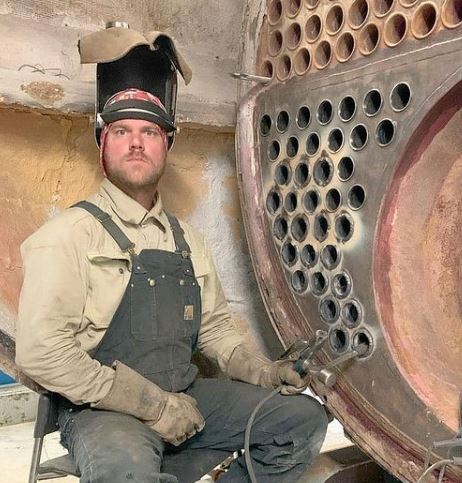Tig welding is a popular technique often used in constructing musical instruments due to its precision and ability to produce high-quality welds. This type of welding uses a non-consumable tungsten electrode to create the weld and an inert gas, such as argon, to shield the weld area from contamination. Tig welding is a versatile method used on various materials, including stainless steel and other alloys commonly used to manufacture musical instruments. To achieve the best results when tig welding musical instruments, it is important to follow expert tips and techniques to ensure the welds are strong and meet industry standards.
The importance of tig welding for musical instruments cannot be overstated. Musicians rely on their instruments to perform at their best, and any weakness or flaw in the construction can affect the sound and playability of the instrument. Tig welding allows for strong, seamless welds that withstand regular use and handling stresses.

Tig Welding for Musical Instruments
This article will provide an overview of the tig welding process and offer expert tips and techniques for tig welding musical instruments.
Preparation For Tig Welding
Before beginning any tig welding project, gathering all necessary equipment and materials is important. This may include a tig welding machine, tungsten electrodes, wire, gas, and protective gear such as a helmet and gloves.
Next, the metal surfaces to be welded should be cleaned and prepared. This may involve sanding or grinding the metal to remove dirt, rust, or paint. It is important to have clean, smooth metal surfaces to achieve a strong and cohesive weld.
Once the equipment and materials are gathered, and the metal is prepared, it is time to set up the tig welding machine. Follow the manufacturer’s instructions for setting up the machine and adjusting the settings according to the thickness and type of metal being welded.
Tips and Techniques
When tig welding musical instruments, it is important to use thin gauge wire and low amperage settings to minimize heat input. Too much heat can distort or damage the metal, resulting in a weak or flawed weld.
When welding, a tungsten electrode with a small, pointed tip will give you greater control and precision. This is especially important when working on small or intricate parts of the instrument.
A backing bar can be helpful when welding thin or delicate metal pieces. The backing bar supports the metal, helping to prevent warping or distortion during the welding process.
It is also a good idea to practice making small, controlled welds before attempting larger ones. This will help you get a feel for the tig welding process and improve your accuracy and control.
Finishing And Post-welding Considerations
After completing the weld, it may be necessary to grind and polish the welds to smooth and blend them into the surrounding metal. This will give the instrument a clean and professional appearance.
Consider applying a protective coating to the welded area to prevent corrosion. This can be especially important for instruments exposed to moisture or harsh environments.
How Far Should Tig Tip Stick Out?
The tip of the TIG (inert tungsten gas) electrode should stick out approximately 1/8 to 1/4 inch from the end of the torch cup. This allows the electrode to be properly positioned and focused on creating the arc.
Should TIG be electrode positive or negative?
In TIG welding, the electrode can be either positive or negative, depending on the type of material being welded and the specific application. In general, aluminum and magnesium are typically welded with the electrode set to positive (DCEN), while steel and stainless steel are welded with the electrode set to negative (DCEP).
What Gas Is Best For Tig Welding?
The type of gas used for TIG welding depends on the welded materials and the specific application. In general, argon is the most commonly used gas for TIG welding, providing good arc stability and producing high-quality welds. Helium can also be used for TIG welding, particularly for welding aluminum and stainless steel, as it provides a hotter arc and can increase welding speed.
Do Magnets Affect Tig Welding?
Magnets can affect TIG welding if placed near the welding area and create a magnetic field that interferes with the electric current used to create the arc. To prevent this, magnets should be kept safe from the welding area.
How Do You Prevent Pinholes In Tig Welding?
Pinholes in TIG welds can be caused by several factors, including incorrect gas flow, improper torch technique, or using an electrode that is too small. To prevent pinholes, it is important to use the correct gas flow rate, maintain a proper arc length, and use the appropriate size electrode for the welded material. Additionally, using a tungsten electrode with a fine point or a balled end can help minimize pinholes’ formation.
Conclusion
Tig welding is an important and valuable skill for anyone involved in repairing and constructing musical instruments. By following the tips and techniques outlined in this article, you can achieve strong and seamless welds that will help ensure the longevity and playability of the instrument. As with any skill, practice is key, so don’t be afraid to get hands-on experience and continue learning about tig welding for musical instruments.

It’s been years since I got into welding as a side hustle. It’s been so long since Doing All kinds of welds for business and pleasure as this is my hobby. Being in this field I have learned from hands-on-experience also came to know what gears work and what doesn’t. The Tig Welder is my own platform where I use to share my experience.






Leave a Reply